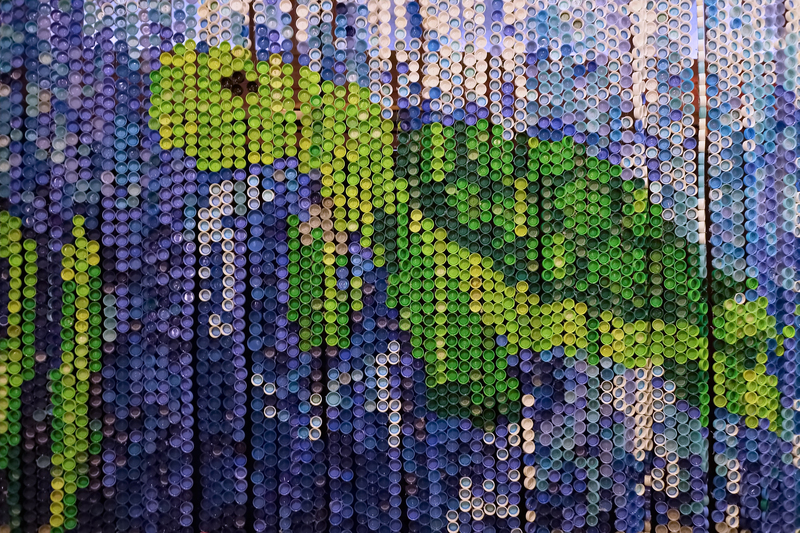
From Awareness to Action: Stopping Microplastic Pollution
Microplastic pollution has become a significant concern for environmentalists, governments, and everyday consumers globally. As we delve deeper into the implications of these minuscule particles, the urgency to transition from mere awareness to decisive action becomes critical. This comprehensive guide aims to illuminate how society can combat microplastic pollution effectively.
Understanding Microplastic Pollution
The term microplastic refers to small plastic pieces less than five millimeters long that can be harmful to ocean and aquatic life. These pollutants stem from a variety of sources, including the breakdown of larger plastic debris, microbeads in personal care products, and synthetic fibers shed through laundry.
The Impact of Microplastics on the Environment
Microplastics have infiltrated nearly every corner of the earth, from the deepest ocean trenches to the top of Mount Everest. Their pervasive presence poses severe threats, such as:
- The introduction of toxic pollutants and harmful chemicals into aquatic ecosystems, affecting marine species and food webs.
- Contamination of drinking water sources, raising health risks for humans and animals alike.
- Interference with the natural processes of soil and its organisms.
Identifying the Sources of Microplastic Pollution
Addressing microplastic pollution begins with understanding its sources. Some primary contributors include:
- Larger Plastics Breakdown: As larger plastic items like bottles, bags, and fishing nets break down, they form microplastics.
- Consumer Products: Some toothpastes, facial scrubs, and other personal care products use microbeads that eventually wash into water systems.
- Synthetic Fabrics: When washed, clothing made from materials like polyester and nylon release microfibers into wastewater.
Moving From Awareness to Action
Raising awareness about the dangers of microplastic pollution is just the beginning. Governments, businesses, and individuals must be proactive in employing tangible solutions to tackle this environmental challenge.
Governmental Initiatives
Governments play a crucial role in regulating and mitigating plastic pollution. Key actions include:
- Legislative Bans: Enacting bans on products containing microbeads and regulating plastic waste management can significantly reduce microplastic sources.
- Improving Waste Management: Developing infrastructure for better recycling and waste management to prevent plastics from entering ecosystems.
- Support for Research: Funding research endeavors that explore microplastic alternatives and measure pollution impacts on health and environment.
Business Strategies
Companies have the power to influence consumer behavior and production processes, adopting practices such as:
- Sustainable Product Innovation: Investing in the research and development of biodegradable materials as alternatives to traditional plastics.
- Corporate Responsibility: Developing and adopting circular economy models to minimize waste through recycling and repurposing.
- Transparency and Education: Informing consumers through transparent labeling and educational campaigns about the impacts of their purchases.
Individual Actions
Individuals, too, have the power to effect change. Consider these actions to reduce personal contributions to microplastic pollution:
- Reduce Plastic Use: Opt for products with minimal packaging, carry reusable bags, and choose glass or stainless steel containers.
- Laundry Practices: Use a microfiber-catching laundry bag or filter to capture microfibers released during washing.
- Educate and Advocate: Spread awareness about microplastic pollution, support policies aimed at reducing plastic use, and engage in community clean-up activities.
Educational Tools and Resources
An informed society is an empowered one. Various tools and resources can aid in educating the public about the impacts of microplastic waste and effective mitigation strategies.
Online Campaigns and Platforms
Numerous organizations are leading online initiatives to tackle microplastic pollution. Notable platforms include:
- NGO Campaigns: Environmental NGOs run campaigns to raise awareness and advocacy for legislation aiming to phase out harmful plastics.
- Social Media Initiatives: Influencers and environmental advocates use social media to challenge and educate the public on alternatives to plastic use and promote reusable products.
Interactive Educational Programs
Interactive programs designed for schools and communities help foster a deeper understanding among younger generations:
- School Curriculums: Integrating modules on environmental sciences and specifically microplastic pollution.
- Community Workshops: Hosting workshops that engage community members in activities such as beach clean-ups and DIY sustainable product making.
Technological Innovations to Combat Microplastic Pollution
Innovation is the backbone of sustainable solutions. Emerging technologies offer promising approaches in the fight against microplastic pollution.
Advanced Filtration Systems
Integration of advanced filtration technologies in water treatment processes is crucial. Emerging systems can capture microplastics before they reach natural water bodies.
Biodegradable Alternatives
Research into biodegradable substitutes for common microplastic sources, such as plastic microbeads, offer a direct product replacement. This innovation is paving ways for large-scale adaptation.
Artificial Intelligence and Big Data
AI and data-driven models are now being utilized to predict pollution hotspots, enabling more targeted and efficient clean-up efforts and policy-making.
Conclusion: A Collective Responsibility
The shift from awareness to action requires a collective effort across all sectors of society. By harnessing a stronger understanding of microplastic pollution, its sources, and implications, along with taking informed, tangible steps, we can work towards a world less burdened by this insidious form of pollution. In taking responsibility, every individual, corporation, and government body has the power to contribute to a cleaner, safer environment for future generations.
Let us unite in the collective endeavor to tackle microplastic pollution and preserve our planet.
